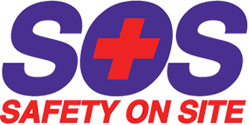 Safety training for workers is mandatory. In accordance with the Workers Safety Insurance Board (WSIB) and federal Occupational Health and Safety (OHS) legislation, all Ontario employers are required to provide a safe workplace for all of its employees. This means employees must be trained on how to be safe on the job and receive training on how to prevent accidents. Training must involve learning how to identify potential hazards, how to safely use, handle, store, and dispose of hazardous substances. Employees must also be taught how to handle emergencies on the job. This latter requirement falls under First Aid training for the workplace.
Safety training for workers is mandatory. In accordance with the Workers Safety Insurance Board (WSIB) and federal Occupational Health and Safety (OHS) legislation, all Ontario employers are required to provide a safe workplace for all of its employees. This means employees must be trained on how to be safe on the job and receive training on how to prevent accidents. Training must involve learning how to identify potential hazards, how to safely use, handle, store, and dispose of hazardous substances. Employees must also be taught how to handle emergencies on the job. This latter requirement falls under First Aid training for the workplace.
All employers must comply with health and safety regulations whether you’re in the construction industry, retail, manufacturing, electrical trade, or oil and gas sector.
Safety training is instruction with site-specific information and occupation-specific procedures addressing worker safety. Training is an important part of understanding the hazards that may be present at a workplace, and preventing injuries on the job.
SOS First Aid and Safety Training can help employers meet industry requirements. Virtually hundreds of e-learning safety courses are offered through the SOS portal.
For example, some common courses for the construction industry are:
- Fall Protection
- Confined Space
- Personal Protective Equipment
- Ground Disturbance
- WHMIS
- TDG
- Slinging and Rigging
Workers in the transportation industry usually require:
- WHMIS
- TDG
- Hours of Service
- Cargo Securement
- Weights and Dimensions
- Pre-Trip Inspection
- Defensive Driving
The oil and gas industry has many
- H2S
- Fall Protection
- Confined Space Entry
- Fire Fighting and Fire Safety
- WHMIS
- TDG
The focus of safety training should be on injury prevention. Training begins when a new worker is hired and continues with regular refreshers to ensure that safety protocols are follow through consistently. Workplace accidents are preventable when organizations establish a culture in which safety becomes everyone’s responsibility and workers feel comfortable reporting hazardous processes. Safety is everybody’s business.






